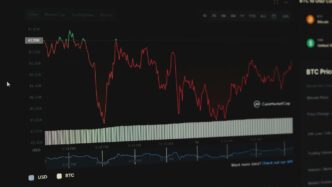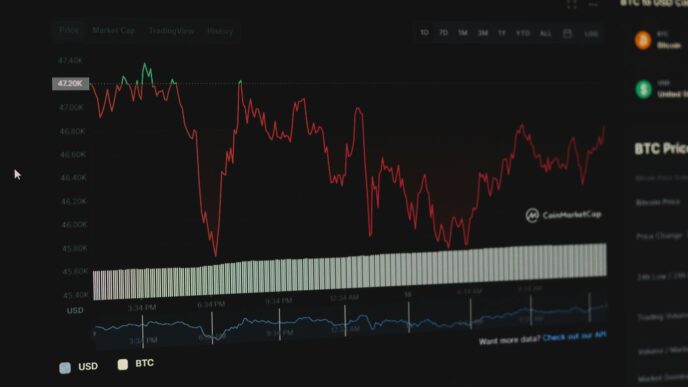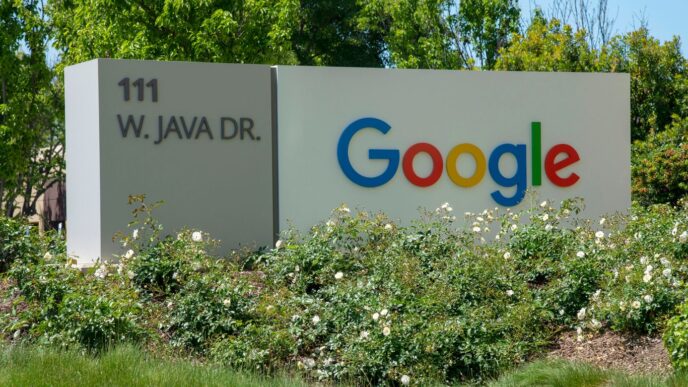Intel’s Chief Information Officer, Motti Finkelstein, is a key figure in how the company is adapting to new technology. He’s been leading efforts in digital transformation, making sure Intel’s IT works smoothly with its big plans for manufacturing chips. Finkelstein also focuses on how IT can help the company’s supply chain and is a big part of Intel’s push into using artificial intelligence across the board. It’s interesting to see how his role as an Intel CIO is evolving with all these changes.
Key Takeaways
- Motti Finkelstein, the Intel CIO, is driving digital changes to support Intel’s manufacturing goals and improve its supply chain.
- The IT strategy at Intel, led by Finkelstein, aims to act like business owners, resulting in significant business impact and faster product launches.
- Finkelstein is spearheading Intel’s AI initiatives, including the ‘AI Inside’ program to boost productivity.
- The role of the CIO is changing rapidly due to AI, requiring new approaches to technology adoption and deployment.
- Sustainability is becoming a focus for IT, with potential savings linked to green data centers, showing IT’s role in environmental efforts.
Intel CIO Motti Finkelstein’s Vision for Digital Transformation
Motti Finkelstein, Intel’s CIO, is really focused on how technology can change the company for the better. He’s been a big part of setting up something called the IDM 2.0 Acceleration Office. This office is all about making sure Intel’s design, manufacturing, and business sides work together smoothly. Think of it like getting all the different parts of a complex machine to run in sync. He also got the IT team involved in making the supply chain work better and cost less. It’s a pretty big job, especially with Intel’s ambitious foundry goals.
Leading Digital Innovation at Intel
Finkelstein’s approach is to have his IT team "think like business owners." This means they’re not just managing computers; they’re actively looking for ways to help the business succeed. This mindset shift has helped the IT department reorganize itself and make a real difference. They’ve managed to create over $1.5 billion in business impact. This comes from things like improving cash flow and getting new technologies out the door faster. It’s about making technology a direct contributor to Intel’s bottom line. You can see how this focus on business impact is a key part of Intel’s IT department.
Standardizing Processes Across Intel’s Foundry Goals
Getting all of Intel’s different teams on the same page is a huge task, especially with the company’s foundry ambitions. Finkelstein’s work through the IDM 2.0 Acceleration Office is central to this. The goal is to create standard ways of doing things, from the initial design of a chip to its final manufacturing. This kind of standardization is what helps prevent errors, speeds up production, and ultimately makes the whole operation more efficient. It’s about building a consistent foundation so that Intel can reliably produce chips for its customers.
Mobilizing IT for Supply Chain Enhancement
When you’re dealing with a company as large as Intel, the supply chain is incredibly complex. Finkelstein has made it a priority to get the IT department actively involved in improving this. By using technology, they’re looking for ways to make the movement of materials and products smoother, more predictable, and less expensive. This could involve better tracking systems, smarter inventory management, or more efficient logistics planning. It’s all about making sure that the right parts get to the right place at the right time, without unnecessary costs.
Driving Business Impact Through IT Strategy
A ‘Think Like Business Owners’ Mindset
It’s not enough for IT departments to just keep the lights on anymore. Intel’s CIO, Motti Finkelstein, really pushes his teams to think about how their work directly affects the company’s bottom line. This means looking at projects not just from a technical standpoint, but also from a business perspective. When IT professionals start thinking like they own a piece of the business, they naturally look for ways to be more efficient and find opportunities for growth. It’s about understanding the customer, the market, and how technology can solve real business problems, not just technical ones. This shift in thinking helps align IT efforts with what the company actually needs to succeed.
Delivering Over $1.5 Billion in Business Impact
Intel’s IT department has made some serious waves when it comes to making a difference for the company. They’ve managed to create over $1.5 billion in business impact, which is pretty huge. This wasn’t just about saving money, though that’s part of it. It’s about how IT has helped speed up product development, improve manufacturing processes, and even find new ways to reach customers. They’ve used data and smart tech solutions to make things run smoother and create more value across the board. It shows that when IT is focused on business outcomes, the results can be pretty impressive.
Accelerating Time-to-Market for New Technologies
Getting new tech out the door quickly is a big deal in the fast-paced world of semiconductors. Intel’s IT team plays a key role in making sure that happens. They work on streamlining the processes needed to bring new chips and technologies to market faster. This involves everything from improving the tools engineers use to making sure the supply chain can keep up. By cutting down on delays and making development cycles more efficient, IT helps Intel stay ahead of the competition. It’s a constant effort to find better ways to support innovation and get those groundbreaking products into customers’ hands sooner.
Spearheading Intel’s AI Initiatives
Motti Finkelstein has been a key player in pushing Intel forward with artificial intelligence. He’s been instrumental in getting the "AI Inside" program off the ground, which is all about making things more efficient across the company. It’s not just about using AI, though; it’s about using it responsibly. Intel is looking at how to make AI work in a way that’s good for the environment and the business long-term. This means thinking about how AI impacts everything from energy use to data management.
The ‘AI Inside’ Program for Productivity
Intel’s "AI Inside" program is a big push to integrate AI tools into everyday work. The goal is simple: make people more productive. Think of it as giving employees smart assistants to help with tasks, analyze data faster, and even speed up product development cycles. It’s about embedding AI into the fabric of how Intel operates, not just as a separate project. This approach helps identify and track over 2,500 AI use cases, all validated through finance to show real business value. It’s a structured way to make sure AI investments are paying off.
Sustainable AI in the Enterprise
When we talk about AI at Intel, sustainability is a major consideration. It’s not enough for AI to be powerful; it needs to be efficient and environmentally conscious. This involves looking at how AI models are trained, how data centers are powered, and how to minimize the carbon footprint of AI operations. Intel is exploring ways to make AI greener, which is a growing concern for businesses everywhere. This focus aligns with a broader industry trend where companies are expected to show progress in environmental, social, and governance (ESG) efforts. It’s about building AI for the future, a future that needs to be sustainable.
Navigating the Future of AI Adoption
The AI landscape is changing incredibly fast, and Intel is right in the middle of it. Finkelstein and his team are focused on moving beyond just experiments to actually putting AI to work at scale. This means figuring out how to build trust in AI systems, especially when they start acting like digital coworkers. It also involves making the necessary changes within the organization to really get the most out of AI. They’re looking at how AI can compress training times, like cutting certification time from a year down to just weeks. The vision is for AI agents to become true partners in business, helping with everything from customer interactions to complex problem-solving. It’s an exciting time, and Intel is working to stay ahead of the curve, much like Virgin Galactic is pushing boundaries in space travel.
The Evolving Role of the CIO in the AI Era
The role of the Chief Information Officer (CIO) has really shifted, especially with all the buzz around artificial intelligence. It’s not just about keeping the lights on in the data center anymore. CIOs are now right in the middle of everything, from how a company does business to how it protects itself online.
CIOs on the Front Lines of AI Deployment
AI is changing how businesses operate, and CIOs are the ones making sure these new tools are put to work effectively and safely. It’s a big job, making sure the tech actually helps the company instead of causing problems. We’re seeing AI pop up everywhere, and CIOs have to figure out the best way to use it.
Reshaping the CIO Playbook for Generative AI
Generative AI, like the kind that can write text or create images, is a whole new ballgame. It’s changing how we think about creating content and even how we solve problems. CIOs need to update their strategies, or their ‘playbook,’ to handle these new capabilities. This means looking at how to use GenAI for things like improving customer service or speeding up product development. It’s about finding practical uses that make a real difference for the business. You can find more on current tech trends at InformationWeek.
Navigating New Terrain with Fast-Evolving Technology
This whole AI space moves incredibly fast. What’s cutting-edge today might be old news tomorrow. CIOs have to be ready to adapt quickly, learn new things constantly, and guide their organizations through this changing landscape. It’s about staying ahead of the curve and making smart choices about which technologies to adopt and how to implement them. The goal is to use these new tools to help the company grow and succeed.
Leadership Lessons from the Intel CIO

Lessons Learned from Flying and Leadership
Motti Finkelstein, Intel’s CIO, often draws parallels between his passion for flying and his approach to leadership. He believes that just as a pilot needs to stay calm and focused during turbulence, a leader must maintain composure when facing challenges. Effective leadership, like flying, requires constant learning and adaptation. It’s about understanding the environment, making quick decisions, and trusting your team. He points out that preparation is key in both fields; a well-prepared flight plan or business strategy significantly increases the chances of success.
Fostering Collaboration Between IT and Business Leaders
Finkelstein emphasizes the importance of breaking down silos between IT and other business units. He advocates for a mindset where IT isn’t just a support function but a strategic partner. This means IT professionals need to understand the business goals deeply and actively participate in achieving them. For instance, involving junior financial analysts in AI initiatives, as he mentioned at the Metis Strategy Summit, helps bridge this gap and ensures AI tools are aligned with business needs. This collaborative approach is vital for driving real business value and making sure technology serves the company’s objectives. It’s about making sure everyone is on the same page, working towards a common goal.
The Importance of C-Suite Communication
Clear and consistent communication with the C-suite is non-negotiable for any CIO. Finkelstein understands that translating complex technical information into business-friendly terms is a core responsibility. This involves explaining the ‘why’ behind IT investments and demonstrating their impact on the bottom line. When IT leaders can articulate their strategies effectively to executives, they gain buy-in and support, which is crucial for implementing large-scale digital transformations. It’s not just about reporting numbers; it’s about telling a story that resonates with the business objectives.
Green Data Centers and IT’s Sustainability Role

CIOs on the Front Line for Sustainability
Motti Finkelstein, like many CIOs today, sees IT’s role expanding beyond just keeping the digital lights on. It’s about actively contributing to the company’s environmental, social, and governance (ESG) goals. This means looking at how technology choices impact the planet. The potential for green data center savings is a big motivator here. It’s not just about being good corporate citizens; it’s also about smart business. Reducing energy consumption in data centers directly translates to lower operating costs, which is something every finance department appreciates.
The Potential of Green Data Center Savings
When we talk about green data centers, we’re really talking about efficiency. Think about cooling systems that use less energy, servers that are more power-efficient, and smart management software that optimizes resource use. It’s about making sure every watt of electricity does the most work possible. For Intel, with its massive computing needs, even small improvements in data center efficiency can add up to significant savings and a much smaller carbon footprint. It’s a win-win situation, really. We’re seeing a lot of focus on this area, and it’s great to see technology leaders like Finkelstein pushing for these changes. It’s a big part of how companies can make a real difference in sustainability efforts.
IT’s Key Role in Planting ESG Efforts
IT departments are uniquely positioned to drive ESG initiatives. They manage the infrastructure that powers everything, so they have a direct line of sight into energy usage, waste, and resource consumption. This puts them squarely in a position to identify opportunities for improvement. For instance, IT can lead the charge in:
- Optimizing cloud usage: Ensuring that cloud resources are right-sized and not over-provisioned.
- Implementing energy-efficient hardware: Choosing servers and networking equipment that consume less power.
- Developing data management strategies: Reducing the amount of data stored unnecessarily, which also cuts down on energy needed for storage and cooling.
- Promoting circular economy principles: Looking at ways to reuse or recycle IT equipment responsibly.
It’s a complex area, but by focusing on these practical steps, IT can play a major part in planting the seeds for a more sustainable future for the entire organization. It’s about making technology work for the planet, not against it. This aligns with broader trends in the industry, where companies are increasingly looking at how their technology choices impact their overall sustainability goals.
Looking Ahead
So, Motti Finkelstein and Intel are really pushing forward with technology, especially with AI. It’s clear that the role of a CIO is changing a lot, and people like Finkelstein are right in the middle of it, figuring out how to use new tools to make things better. It’s not just about keeping the lights on anymore; it’s about driving the business forward. We’ll have to see what comes next, but it’s exciting to watch how companies like Intel are shaping the future of tech.
Frequently Asked Questions
Who is Motti Finkelstein?
Motti Finkelstein is the Chief Information Officer at Intel. He helps lead the company’s technology efforts and focuses on making things work better and faster using digital tools. Think of him as the main tech helper for a huge company that makes computer chips.
What is Intel’s main tech goal?
Intel is working on improving how it makes computer chips and how it does business using new technology. Motti Finkelstein’s job is to make sure the company’s computer systems and digital tools are up-to-date and help achieve these big goals. This includes making sure all the different parts of Intel work together smoothly.
What does ‘think like business owners’ mean for IT?
Motti Finkelstein encourages his team to think like they own the business. This means they should focus on how their tech work helps make money for Intel, saves the company money, or helps get new products out to customers faster. It’s about making a real difference in how the company performs.
How is Intel using AI?
Intel is using artificial intelligence (AI) to help its employees do their jobs better and faster. Motti Finkelstein helped start a program called ‘AI Inside’ which brings AI tools to different parts of the company to boost how much work people can get done.
Is Intel focused on green technology?
Yes, Motti Finkelstein believes that making data centers (big buildings full of computers) more environmentally friendly is important. He sees that saving energy in these centers can also save the company money, which is a win-win for both the planet and the business.
How is the CIO role changing with AI?
The role of a CIO is changing a lot because of new tech like AI. CIOs need to be good at explaining new technology to everyone in the company, especially the top leaders. They also need to help their teams learn and adapt to these fast-changing tools.














